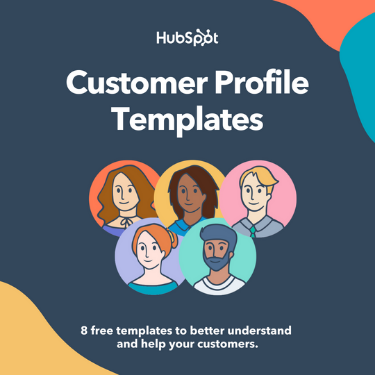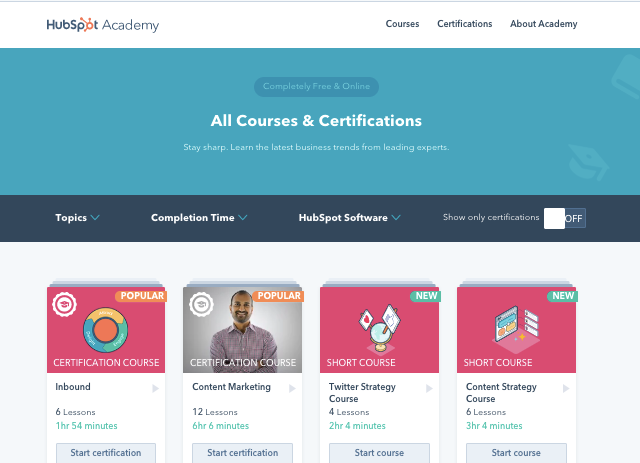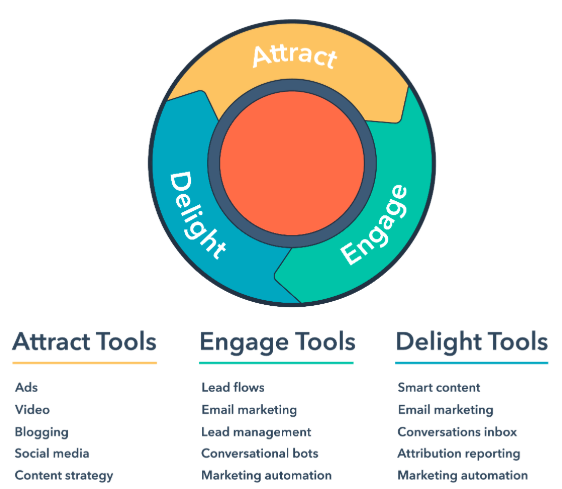They were targeting the right people at the wrong companies: startups that couldn’t afford their product, and enterprises that didn’t have the problem it solved. They had nailed the individual, but missed the organization.
Personas tell you who you’re speaking to. ICPs tell you which companies are worth speaking to in the first place. Mix them up, and you waste time on prospects who’ll never convert. In this article, I'll break down the key differences between ICPs and buyer personas, as well as when to use each one in your sales and marketing efforts.
Table of Contents
- What is an ideal customer profile (ICP)?
- What is a buyer persona?
- Do you need both an ideal customer profile and buyer personas?
What is an ideal customer profile?
An ideal customer profile (ICP) defines the perfect company for your product or service. It's a detailed description of the organization that would get the most value from what you’re selling and actually has the budget and authority to buy it.
During my work with Zapier's content team, I learned how their ICP shaped everything from blog topics to case study selection.
Rather than targeting just “any business that uses apps,” their ICP is incredibly specific: Fast-growing companies with 50-500 employees that use 5+ disconnected software tools, have dedicated operations teams, and lose 10+ hours weekly to manual data entry between systems.
This precision matters because it prevents your team from chasing leads that will never convert.
When I help clients build ICPs, I focus on these essential characteristics:
- Budget and company size. What's the minimum revenue threshold for a company to afford your solution? When I worked with a project management SaaS, we discovered companies under $2M annual revenue rarely had budget for their $50K enterprise package, no matter how much they needed it.
- Industry and vertical. Some solutions work better in specific sectors. During my Zapier work, I noticed their automation tools resonated strongly with ecommerce and marketing agencies but required different messaging for manufacturing companies.
- Geographic and legal constraints. Can you actually sell to companies in certain regions? One client learned they couldn't serve European companies due to data residency requirements.
- Technical infrastructure. Does your prospect have the systems and expertise to implement your solution? A company still relying on spreadsheets for everything may not be ready for advanced analytics software.
- Pain point urgency. How critical is the problem you solve? Companies facing compliance deadlines buy faster than those optimizing for convenience.
Your ICP acts as your first qualification filter, helping sales focus on accounts that can actually become customers rather than spinning wheels on impossible prospects.
How do you find quality leads?
Once you've defined your ICP, you need a systematic approach to find companies that match your criteria. I’ve found the most success using a two-step research process that filters out unqualified prospects before any outreach begins.
Step One
First, I use Crunchbase to sort potential companies by funding series. This immediately tells me if they're in the right growth stage and have the budget for my services. Series A companies have different needs than Series C companies, and bootstrapped businesses operate on entirely different timelines.
Step Two
Then, I move to LinkedIn Sales Navigator for deeper qualification. Rather than sending cold emails or sliding into DMs randomly, I use Navigator's advanced filters to narrow down my target list. I filter by company size, industry, recent hiring activity, and technology mentions in job postings.
The key is building a qualified list first, then reaching out. I'd rather spend an hour researching 20 highly qualified prospects than sending 200 generic messages to anyone with a pulse. This approach typically gives me a 40 to 50% response rate compared to the 5 to 10% you get from spray-and-pray tactics.
Quality research upfront saves countless hours of dead-end conversations later.
What is a buyer persona?
A buyer persona is a detailed profile of an individual decision-maker within your ideal customer companies. While your ICP tells you which organizations to target, buyer personas help you understand the specific people you need to convince, influence, or convert within those organizations.
Companies with perfect ICPs can struggle if they don't understand their individual buyers.
One client sold marketing automation software to mid-market SaaS companies (great ICP), but their messaging completely missed the mark because they were writing for CMOs when the actual buyers were marketing operations managers with totally different priorities and pain points.
For my content strategy business, my primary buyer persona is the content team lead — typically someone managing 2-5 content creators, struggling with inconsistent brand voice, and trying to scale content production without losing quality. They're not the CMO making big strategic decisions; they’re the person in the trenches dealing with editorial calendars and writer management daily.
Similarly, when I worked on content for Zapier, their buyer personas included:
- The operations manager (feeling daily pain from manual data entry).
- The marketing operations specialist (drowning in lead routing chaos).
- The customer success manager (manually updating records across five different systems).
Each persona had the same core problem — disconnected workflows — but experienced it differently.
Your buyer personas should include:
- Role and responsibilities. What does their typical day look like and what are they accountable for? My content team lead manages editorial calendars, briefs freelancers, and reports content performance to leadership weekly.
- Goals and KPIs. How do they measure success and what keeps them up at night? They're measured on content output consistency, brand voice adherence, and often content-driven lead generation.
- Decision-making authority. Can they buy independently, or do they need approval from others? Usually they can hire freelancers under $5K monthly but need approval for bigger strategy overhauls or new tools.
- Information consumption habits. Where do they go to learn and stay updated on industry trends? They follow content marketing blogs, are active in Slack communities like Content Marketing Institute, and attend virtual conferences.
- Objections and concerns. What typically holds them back from making a purchase decision? Budget constraints, time to onboard new freelancers, and fear that outsourcing will compromise their brand voice.
If you're building buyer personas, start with these targeted buyer persona questions to help clarify who your ideal customers are and what they need. Once you've defined them, share the personas across your team to keep messaging, product, and sales aligned.
Pro tip: You can also use the free Make My Persona tool to build your unique personas.
Do you need both an ideal customer profile and buyer personas?
The short answer is yes, but they serve different purposes at different stages of your sales and marketing process. I learned this the hard way when I first started freelancing and treated them as interchangeable.
Spoiler alert: They're not.

Think of your ICP as your pre-qualification filter and buyer personas as your personalization guide. You need both to avoid wasting time on the wrong companies or saying the wrong things to the right people.
When to Use Your ICP
Your ICP comes into play at the very beginning of your sales process. It's your first line of defense against spending months nurturing leads that will never convert.
I use my ICP when I'm researching potential clients on Crunchbase or filtering companies in LinkedIn Sales Navigator. Before I even look at individual people, I need to know if the company fits my criteria: Are they venture-backed or profitable bootstrapped companies? Do they have 20+ employees? Are they in a content-heavy industry like SaaS or fintech?
Your sales team should use the ICP for lead qualification calls. If a company doesn't meet your basic criteria — budget, size, industry, or technical requirements — it doesn’t matter how perfect the individual contact seems. That lead should be disqualified quickly so your team can focus on viable prospects.
When to Use Buyer Personas
Once you've confirmed a company fits your ICP, buyer personas take over. They guide how you communicate, what content you create, and which pain points you emphasize.
When I'm writing a cold outreach message to a content team lead, I mention editorial calendar chaos and brand voice consistency — pain points specific to their role. But if I’m reaching out to a CMO at the same company, I focus on content's impact on pipeline and team efficiency metrics.
Your marketing team uses personas to create targeted content, choose the right channels, and craft messaging that resonates. Your sales team uses them to customize demo scripts, anticipate objections, and speak the prospect's language during calls.
How They Work Together
When you use both frameworks in tandem, you focus your efforts on the right companies and connect with the right people inside them.
Your ideal customer profile ensures you're going after companies with the right size, stage, and needs, and your buyer personas help you tailor your messaging to the specific people involved in the buying process.
For example, one of my SaaS clients targets Series B companies with 100–500 employees. That’s their ICP. Within those companies, they speak to three distinct personas: the VP of marketing (who controls the budget), the marketing ops manager (who uses the tool), and the CMO (who signs off). Same company, three very different conversations.
ICPs tell you which companies to pursue. Buyer personas tell you how to sell to the people inside those companies. You need both to run a focused, effective sales and marketing strategy.
Editor's Note: This post was originally published in July 2019 and has been updated for freshness, accuracy, and comprehensiveness.
Buyer Personas

.webp)






![Become a Content Marketing Expert This Year [Course + Workbook]](https://blog.hubspot.com/hubfs/content-marketing-certification-course-image.jpeg)


.jpg)
